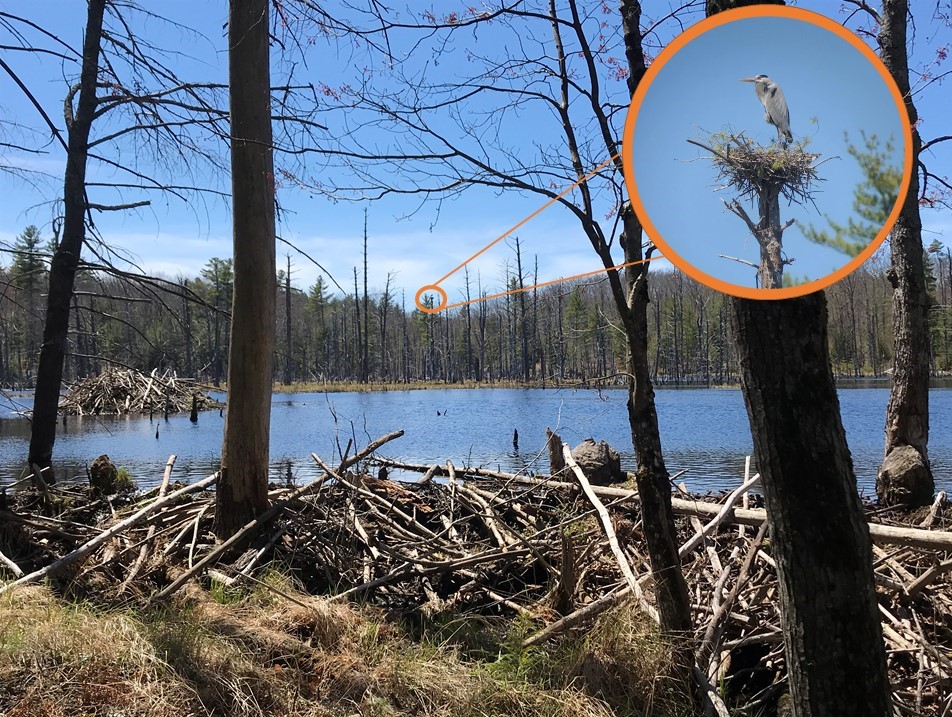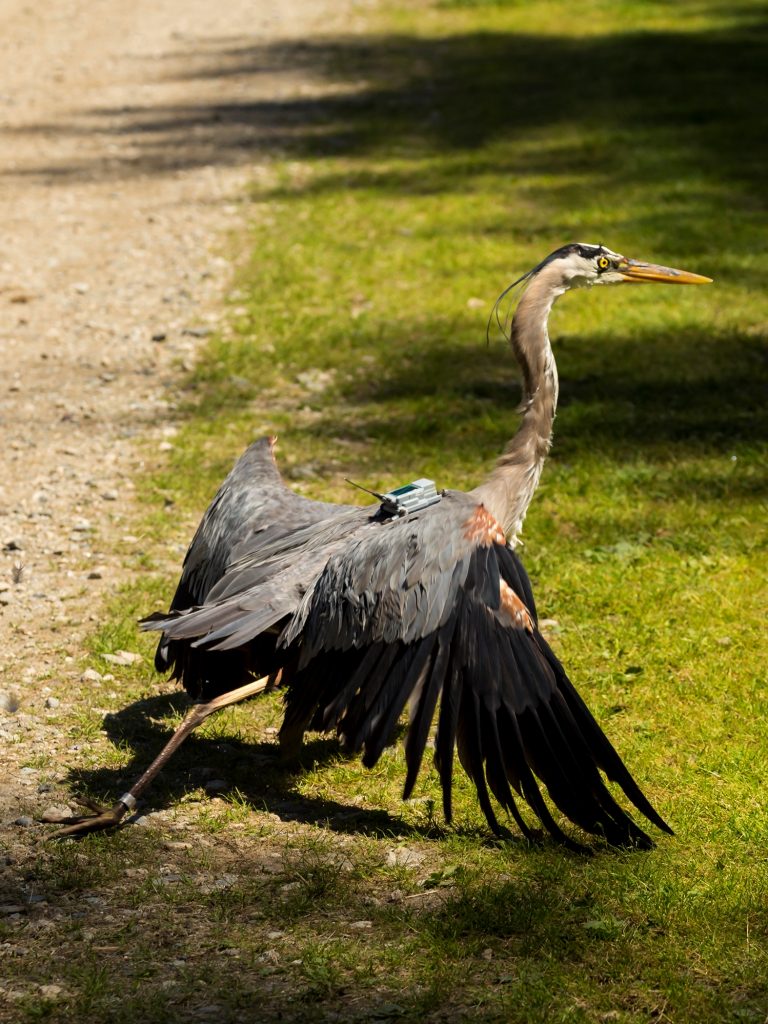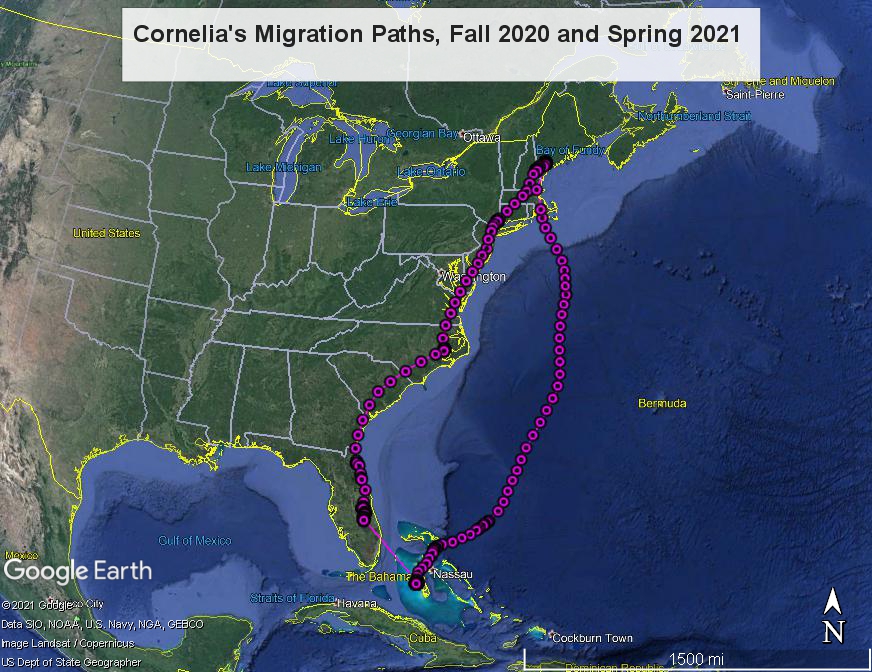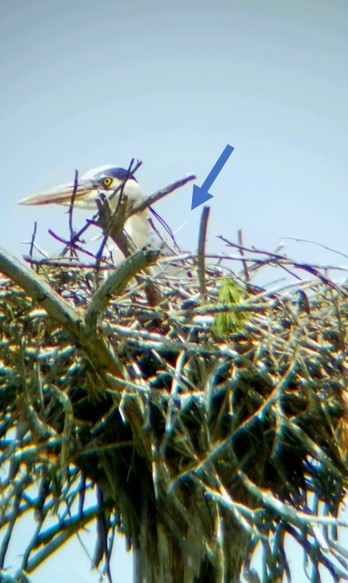July 20, 2021 at 10:10 am
This article was originally written for the Maine Woodland Owners June 2021 newsletter.

Have you heard of Cornelia, an adult female great blue heron tagged with a GPS transmitter, who nests in Maine and migrates to the Bahamas for the winter? She is one of ten other herons who’ve been equipped with GPS transmitters by Maine Department of Inland Fisheries and Wildlife (MDIFW) to learn more about heron movements, habits, and habitats in Maine and beyond. The project began with the help of a Maine Outdoor Heritage Fund grant and many partnering schools, and is part of MDIFW’s ongoing efforts to understand the status of great blue herons in the state – especially along the coast where their population has declined by 89% since the 1980s.

Cornelia was originally captured at the New Gloucester Fish Hatchery in June 2016. The GPS transmitter that she wears like a backpack is solar-powered and logs her location as often as every 5 minutes. Each evening, the transmitter communicates via cell towers to download the GPS data from the past 24 hours to an open-source website, movebank.org, where anyone can view where she’s been.
Over the past five years, Cornelia nested in a large great blue heron colony in a beaver flowage in Gray with up to 40 other pairs. Beaver flowages are the most common habitat in Maine used by nesting great blue herons. They build stick nests in the snags in the middle of the wetland. The water below the nests deters mammalian predators such as raccoons, mink, and fisher, and provides a great place for the herons to feed. By nesting in groups, they benefit from having many eyes and ears on the lookout for predators, which also include owls, hawks, and eagles. In 2020, her movements indicated her nest likely failed. She spent the rest of the summer visiting other wetlands to feed and potentially looking for a new place to nest the next year. As usual, she migrated to the Bahamas for the winter, and returned to Maine in mid-April. We noticed that her location this spring was in a different wetland than where she nested in the past, and it was one that we did not know hosted nesting herons. We were excited to visit the wetland on the ground and perhaps discover a new colony.
We set out on foot to the wetland which is located in the Snow Hill, New Gloucester area, and is partially owned by Maine Woodland Owners. Lo and behold, we found a heron nest high in a snag in the middle of the wetland. We were surprised to find only one nest because herons typically nest in groups. This had to be her nest, but the first few times we visited she was not there, just her mate. Both males and females incubate and care for their young. On our third visit, she was there incubating her eggs. During our time there, we used our base station to download GPS data from her transmitter that hadn’t downloaded previously. This data shows that last fall she flew 59 hours nonstop over the open ocean to get to the Bahamas! It also shows that she took a full month (March 13 – April 14) to migrate back north to Maine, stopping along the east coast several times.

One of our volunteers through the Heron Observation Network, a citizen science adopt-a-colony program, will monitor Cornelia’s nest this year. It can be difficult to pick out a heron with a transmitter among 40 nests, thus we never were able to see if she successfully raised young and how many. This year, with just one nest to watch, we’ll know how many young make it to fledge. It will also be interesting to see if her nesting at this site attracts more herons to nest here in future years.
If you are interested in learning more about MDIFW’s great blue heron monitoring efforts, check out the Citizen Science Portal. You can also track Cornelia and other GPS-tagged herons by following the instructions here.

The arrow points to the transmitter’s antenna.
Photo by Brittany Currier.